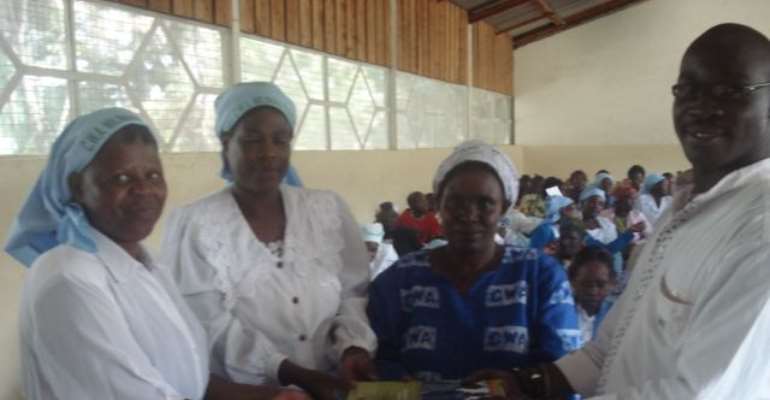The Kenyan internally displaced: refugees in their own country

John B Wamukoya, Kenya YMCA
At Kenya's Nakuru Pipeline camp for Internally Displaced Persons (IDPs) women sit on benches and converse in low tones as they weave kiondos (sisal market bags) while a few men lie sick with the realisation that they can no longer provide for their families. They are refugees in their own country. The Pipeline area was not designed to house the IDPs. In February 2008, refugees rejected from the beyond capacity Gilgil camp a few kilometres away pitched their tents and nearly 400 have yet to leave or have returned after forced resettlement.
A large number came from the Kiambaa, Molo, Kuresoi and Burnt Forest regions, areas overrun by post-election violence of 2007/8 which in total saw more than 1 200 people killed and more than 350 000 people displaced.
After the traumatic experiences, Pipeline residents say they would rather sell their land and resettle somewhere new. They argue that planting season had passed and their farms held no value or security. As Lucy Wanjiku, an 85-year-old grandmother expressed, ”I would rather be eaten by wild animals in the wilderness than go back to be butchered by people I always called
neighbours.”
Even the official promise that police posts be erected to ensure security did not seem to waive them. “Police posts have always been within reach but they never saved the situation,” one victim of the political violence observed. Hunger stands as the biggest affliction. With the direct supply of relief food from the Red Cross Society to the camp suspended, they are now dependent on maize consignments supplied by the government's local district office.
Medical attention is also not within easy physical or financial reach. The Provincial General Hospital is both expensive and not easily accessible, and overworked medical staff are slow to provide service. Caroline Wamuhu, a patient admitted in 2009, could only get bed space on credit. “I cannot even afford the drugs they prescribed for me,” she added. She was forced to leave her infant child at the camp to survive on porridge for the few days she was admitted.
Despite their experiences and displacement, many continue to live by their hopes and claim to have bought land and livestock from perpetrators of the election violence. It is this achievement, they say, that has evoked an envy and jealousy that has turned extremely sour with time.
The refugees now wait in the hope that their resettlement packages will increase. Their wait for a better government resettlement offer has resulted in many turning down jobs such as domestic service, as they believe the work to be beneath them.
The IDP situation is a time bomb if not handled with the swiftness and care it requires. Women and children are more affected as they have fewer opportunities for survival and continue to fight an ongoing battle to reverse the stigma and public's attitude to their refugee status. Ongoing humanitarian efforts aim to redress the cultural stigma attached to refugees and provide for their emergency needs, education and skills development.
Through the YMCA Nakuru Peace Ambassador Programme, IDPs are being guided through basic entrepreneurship skills that enable them to become more self-reliant. Young girls and boys are absorbed into the YMCA school and slowly begin to appreciate the fact that they will need to stand up, dust themselves off and rebuild their lives before the community begins to see them as a problem.
To date the YMCA Nakuru has trained 120 youth and a further 90 women with entrepreneurship and creative leadership skills. The YMCA Nakuru is currently in negotiation with the local leaders to contract the young men and women from the Nakuru Pipeline IDP camp for government-initiated jobs for young people. The women have started developing business initiatives such as table-banking and money-lending, amongst themselves to help generate the income needed to buy land on which to settle.
Photo: IDP women have benefitted from entrepreneurship and leadership training
Credit: John B Wamukoya
Rider: This article originally appeared in Siyahamba (no. 19 - Migration), newsletter of the Africa Alliance of YMCA
